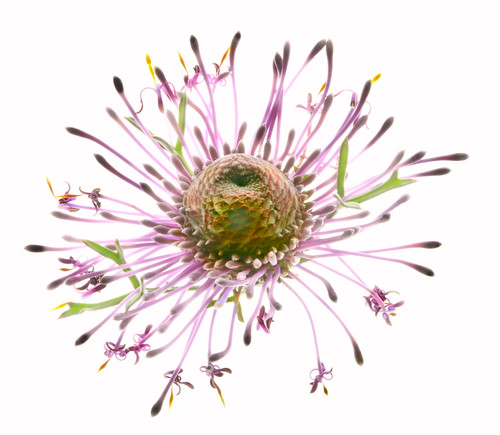
Rose Cone Flower, photo by Harold Davis. View this image larger.
Isopogon formosus, commonly known as the Rose Cone Flower, is a standing shrub native to western Australia. This member of the Proteaceae family has a dry look about it, and is an evergreen with leaves that come to sharp points. At a glance, one can see why it likes sandy soil, and why deer don’t munch it.
It isn’t until the wild flowers start to grow like buttons at the end of the evergreen, spiked branches that you start to see how special Isopogon formosus is. I love the implied motion in the incredibly intricate and delicate structures at the ends of the pistils (you can see these in the photo above).
To create this photo, I snipped the flower off my Isopogon formosus bush and placed it on a light box. With a macro lens, I shot a wide range of exposures, and all at the same stopped-down f-stop (f/36). Since this was intended to be a high key view, my bias was to over exposure, and I shot in 2X increments from the nominally “correct” exposure of 1 second. So I ended up with five exposures at 1 second, 2 seconds, 4 seconds, 8 seconds, and 16 seconds.
In Photoshop, I started with the lightest exposure (16 seconds) to get a pure white background. Then I layered in the flower, getting selectively and successively darker.
The center of the flower (the famous “button” or “rose cone”) didn’t look right, so I converted the five exposures using the Photomatix HDR tool, saved the result, and copied it in as a layer (just using the center of the flower) for the final result.